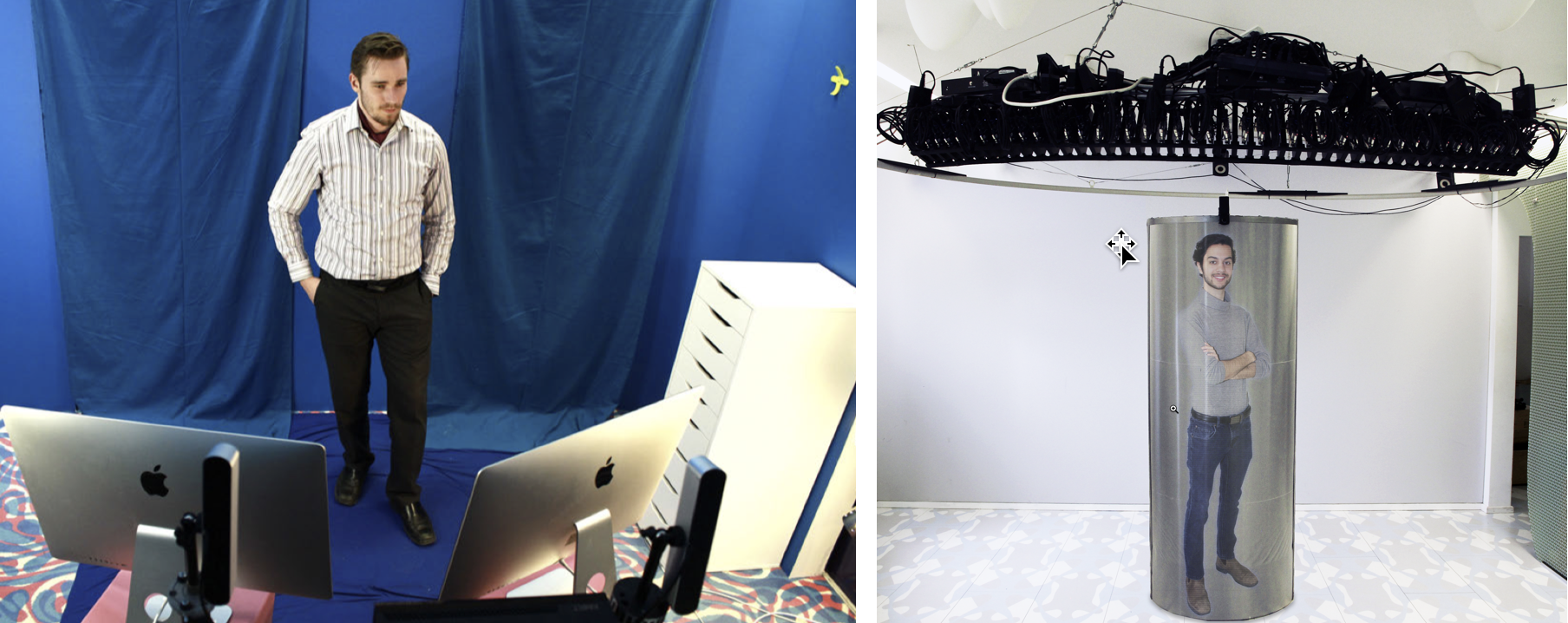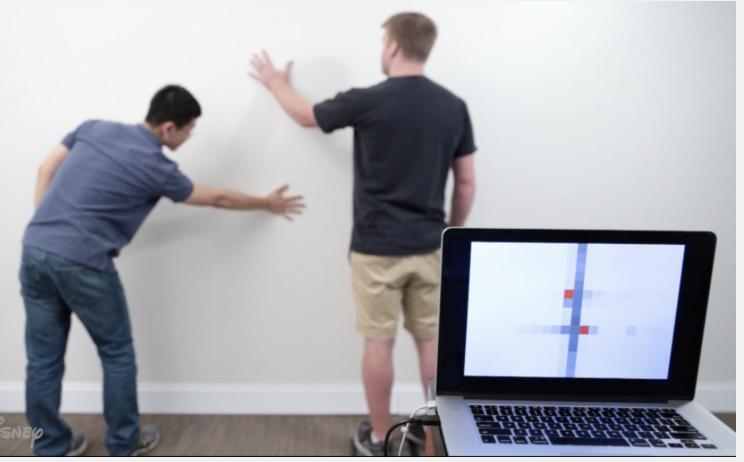round-up | Three radical new user interfaces
April 27, 2018
Holodeck-style holograms could revolutionize videoconferencing
A “truly holographic” videoconferencing system has been developed by researchers at Queen’s University in Kingston Montreal. With TeleHuman 2, objects appear as stereoscopic images, as if inside a pod (not a two-dimensional video projected on a flat piece of glass). Multiple users can walk around and view the objects from all sides simultaneously — as in Star Trek’s Holodeck.
Teleporting for distance meetings. TeleHuman 2 “teleports” people live — allowing for meetings at a distance. No headset or 3D glasses required.
The researchers presented the system in an open-access paper at CHI 2018, the ACM CHI Conference on Human Factors in Computing Systems in Montreal on April 25.

(Left) Remote capture room with stereo 2K cameras, multiple surround microphones, and displays. (Right) Telehuman 2 display and projector (credit: Human Media Lab)
Interactive smart wall acts as giant touch screen, senses electromagnetic activity in room
Researchers at Carnegie Mellon University and Disney Research have devised a system called Wall++ for creating interactive “smart walls” that sense human touch, gestures, and signals from appliances.
By using masking tape and nickel-based conductive paint, a user would create a pattern of capacitive-sensing electrodes on the wall of a room (or a building) and then paint it over. The electrodes would be connected to sensors.
Acting as a sort of huge tablet, touch-tracking or motion-sensing uses could include dimming or turning lights on/off, controlling speaker volume, acting as smart thermostats, playing full-body video games, or creating a huge digital white board, for example.
A passive electromagnetic sensing mode could also allow for detecting devices that are on or off (by noise signature). And a small, signal-emitting wristband could enable user localization and identification for collaborative gaming or teaching, for example.
The researchers also presented an open-access paper at CHI 2018.
A smart-watch screen on your skin
LumiWatch, another interactive interface out of Carnegie Mellon, projects a smart-watch touch screen onto your skin. It solves the tiny-interface bottleneck with smart watches — providing more than five times the interactive surface area for common touchscreen operations, such as tapping and swiping. It was also presented in an open-access paper at CHI 2018.
